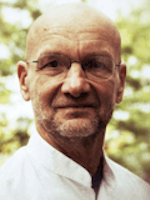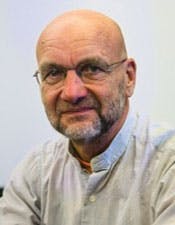Market programs and regulations hold back HCL in the US (MAGAZINE)
STAN WALERCZYK, principal of Lighting Wizards, describes the challenges of implementing human-centric lighting in the US but also sees opportunity to positively impact our wellbeing.
Caroline Hayes' article "Research assesses the value of human-centric lighting" in the July/August issue of LEDs Magazine was quite good, and shows that Europe is ahead of the rest of the world in human-centric lighting (HCL). If you have not yet read A.T. Kearney's study "Quantified benefits of Human Centric Lighting," which was the impetus for the coverage, please do.
Interested in more articles & announcements on LED life science applications?
There is also great work on HCL happening in the US but there are still obstacles. This column addresses mainly the American perspective - with regard to some global perspective - on HCL because in several ways Europe is quite different, including the following: how hospitals and care facilities are funded and reimbursed in much of Europe; region-specific energy codes or lack thereof; guidelines set by the DesignLights Consortium (DLC); standards developed by the Illuminated Engineering Society (IES) of North America; and latitude.
It is my understanding that most of Europe does not have energy codes like ASHRAE or California's Title 24, which probably would not allow the 2000 lx quoted in A.T. Kearney's study in an industrial facility. Although American energy codes allow for enough wattage to produce sufficient light for the visual part of the human visual system, they may not allow enough wattage for sufficient light to affect the non-visual (or biologic) portion of the visual system - which is part of what HCL is designed to do.
In California, even if lights are brighter for only a short time in the morning to help suppress melatonin production, all of the extra wattage is included in the lighting power density calculation - although that wattage is not used during typical afternoon peak demand. What is the sense of saving every watt if worker productivity, student learning, and general wellbeing are decreased?
Europe also does not have a DLC-type of organization. In North America, DLC does not currently approve interior LED lighting, other than high bays, at CCTs above 5000K, even if such products can also be used below 5000K (such as in a tunable fixture). As a result, many rebate organizations will not provide rebates on the high-CCT fixtures.
I asked DLC numerous times for its scientific rationale for that Kelvin cap but never received it. I am not aware of any good neuroscientist that agrees with a 5000K cap. Some European and Asian LED product manufacturers have told me they will probably not bring their tunable (dimming, CCT-, or color-changing) or high-fixed-CCT LED products into North America until such lighting qualifies for rebates. Americans in the Pacific Northwest are fortunate because the Lighting Design Lab sets many policies in that area and has no Kelvin cap. For that reason, some lighting companies have focused HCL efforts in that region.
Although the IES is an excellent organization and has done a lot of good work, it can be considered to move quite slowly regarding HCL. I am amazed how many North American lighting professionals still cling to the notion that the incandescent bulb is the holy grail of CCT and CRI, and that the Kruithof Effect is valid. The lack of IES relevance in Europe may be another reason that region is more advanced regarding HCL. Furthermore, much of Europe is farther north than the bulk of the population of the US, so seasonal affective disorder (SAD) may be more of a concern and therefore more light-based measures may be taken to combat the disorder in that region.
In addition to Mark Rea and the Lighting Research Center, HCL resources in the US include the Human Centric Lighting Society (HCLS). Please check out the website at humancentriclighting.org. Although most of the HCLS members are in the US, some are located in Canada, Europe, and Asia. Members cross a spectrum of roles in the development and implementation of HCL - including neuroscientists; eye specialists; lighting experts, designers, and retrofitters; educators; ESCOs; and more.
Ms. Hayes mentioned monetization. One of the main goals of the HCLS is to get more HCL projects installed. To raise the profile of HCL, Dr. Doug Steel presented a value pyramid during the HCL workshop at Strategies in Light in February and also at the HCLS Conference this past June in Seattle. The pyramid shows people are willing to pay for lighting that has general wellbeing or specific therapeutic benefits.
Editor's note: This column was developed as an individual contribution by Stan Walerczyk and is not an HCLS document.
STAN WALERCZYK is principal at Lighting Wizards (lightingwizards.com).

Stan Walerczyk | Principal
Stan Walerczyk is principal of Lighting Wizards and chair of the Human Centric Lighting Society and Committee. His 26 years lighting experience includes distribution, maintenance, retrofit contracting, 3rd party review, consulting, design, luminaire design, policy making and research. He assisted the DOE research on spectrally enhanced lighting. He has written over 100 articles and white papers and presented close to 1000 seminars. He is currently on the IES Spectral Effects and Energy Management Committees.






